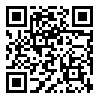1. Diener E, Suh EM, Lucas RE, Smith, HL. Subjective well-being: Threedecades of progress. Psychol Bull. 1999;125(2):276-302. [
] [
DOI:10.1037/0033-2909.125.2.276]
2. King AC, Pruitt LA, Phillips W, Oka R, Rodenburg A, Haskell WL. Comparative effects of two physical activity programs on measured and perceived physical functioning and other health-related quality of life outcomes in older adults. J Gerontol A Biol Sci Med Sci. 2000;55(2):M74-83. [
] [
DOI:10.1093/gerona/55.2.M74] [
PMID]
3. Qasemi N, Kajbaf MB, Rabiei M. Effectiveness of group therapy based on quality of life on mental well-being and mental health. J Clin Psychol. 2011;3(2):23-34. [Persian] [
]
4. Diener E, Emmons RA, Larsen RJ, Griffin S. The satisfaction with life scale. J Personal Assess. 1985;49(1):71-5. [
] [
DOI:10.1207/s15327752jpa4901_13] [
PMID]
5. Gonzales NA, Tein JY, Sandler IN, Friedman RJ. On the limits of coping: Interaction between stress and coping for inner-city adolescents. J Adolesc Res. 2001;16(4):372-95. [
] [
DOI:10.1177/0743558401164005]
6. Seligman EP, Mihaly C. "Positive psychology:¬An introduction": Reply. Am Psychol. 2001;56(1):89-90. [
] [
DOI:10.1037/0003-066X.56.1.89]
7. Ryff CD, Keyes CL. The structure of psychological wellbeingrevisited. J Pers Soc Psychol. 1995;69(4):719-27. [
] [
DOI:10.1037/0022-3514.69.4.719]
8. Nel L. The psychofertological experiences of masters degree stuents in professional psychology programms: An interpretative phenomenological analysis [Dissertation]. Bloemfontein: University of the Free State; 2011. [
]
9. Ryff CD. Happiness is everything, or is it? Explorations on the meaning ofpsychological well-being. J Pers Soc Psychol. 1989;57:1069-81. [
] [
DOI:10.1037/0022-3514.57.6.1069]
10. Bauer J, Mulder RH. In search of a good method for measuring learning errors at work (??!!). Workplace Learning, USA. 2010. p.111.
11. Shokri O, Shahraraee M, Daneshvarpour Z, Dastjerdi R. Individual differences in identity styles and academic performance: The role of identity commitment and psychological well-being. Health Psychol Res. 2007;1(1):16-29. [Persian] [
]
12. Diener E. Understanding scores on the satisfaction with life scale (??!!). J Cross-Cult Psychol. 2006;33:340-91.
13. Narimani M, Yosefi F, Kazemi, R. The role of attachment styles and quality of life in predicting psychological well-being in adolescents with learning disabilities. J Learn Disabil. 2014;3(4):124-42. [Persian] [
]
14. Schmutte PS, Ryff CD. Personality and wellbeing: Reexamining methods and meanings. J Pers Soc Psychol. 1997;73:549-59. [
] [
DOI:10.1037/0022-3514.73.3.549]
15. Mikaili Monee, F. The Study of undergraduate students' psychological well-being status in Urmia University. Horizon Med Sci. 2011;17(1):65-72. [Persian] [
]
16. Bayani AA, Kouchaki AM, Bayani A. Reliability and validity of ryff's psychological well-being scales. Iran J Psychiatry Clin Psychol. 2008;14(2):146-51. [Persian] [
]
17. Kaplan HB. Toward the understanding of resilience: A critical review of definitions and models. In: Glantz MD, Johnson JL, editors. Resilience and development: Positive life adaptations. Dordrecht, Netherlands: Kluwer Academic Publishers; 1999. pp. 17-84. [
]
18. King AC, Pruitt LA, Phillips W, Oka R, Rodenburg A, Haskell WL. Comparative effects of two physical activity programs on measured and perceived physical functioning and other health-related quality of life outcomes in older adults. J Gerontol A Biol Sci Med Sci. 2000;55(2):M74-83. [
] [
DOI:10.1093/gerona/55.2.M74] [
PMID]
19. Bronk KC, Hill PL, Lapsley DK, Talib TL, Finch H. Purpose, hope, and life satisfaction in three age groups. J Posit Psychol. 2009;4(6):500-10. [
] [
DOI:10.1080/17439760903271439]
20. Lazarus RS, Folkman S. Stress, appraisal, and coping. London: Springer Publishing Company; 2009. [
]
21. Ryff CD, Singer BH. Know thyself and become what you are: Aeudaimonic approach to psychological well-being. J Happiness Stud. 2008;9(1):13-39. [
] [
DOI:10.1007/s10902-006-9019-0]
22. Ryff CD, Singer B, Love GD, Essex MJ. Resilience in adulthood and later life: Defining features and dynamic processes. In: Lomranz J, editor. Handbook of aging and mental health: An integrative approach. New York, NY: Plenum Press; 1998. [
] [
DOI:10.1007/978-1-4899-0098-2_4]
23. Diener E, Scollon CN, Lucas RE. The evolving concept of subjective well-being: The multifaceted nature of happiness. In: Diener E, editor. Assessing well-being: The collected works of Ed Diener. New York, NY: Springer Science + Business Media; 2009. pp. 67-100. [
] [
DOI:10.1007/978-90-481-2354-4_4]
24. Folkman S, Lazarus RS. An analysis of coping in a middle-aged community sample. J Health Soc Behav. 1980;21(3):219-39. [
] [
DOI:10.2307/2136617]
25. Luzczynka A, Scholz V, Schwarzer R. The general-efficacy scale: Multicultural validation studies. J Psychol. 2005;139(5):439-57. [
] [
DOI:10.3200/JRLP.139.5.439-457] [
PMID]
26. Stoeber J, Kempe T, Keogh EJ. Facets of self-oriented and socially prescribed perfectionism and feelings of pride, shame, and guilt following success and failure. Personal J Individ Differ. 2012;44(7):1506-16. [
] [
DOI:10.1016/j.paid.2008.01.007]
27. Evans RE, Fawole HO, Sheriff SA, Dall PM, Grant PM, Ryan CG. Point-of-choice prompts to reduce sitting time at work: A randomized trial. Am J Prev Med. 2012;43(3):293-710. [
] [
DOI:10.1016/j.amepre.2012.05.010] [
PMID]
28. Ventegodt S, Merrick J. Psychoactive drugs & quality of life. Sci World J. 2003;3:694-706. [
] [
DOI:10.1100/tsw.2003.57] [
PMID] [
PMCID]
29. Keyes CL. The mental health continuum: From languishing to flourishing in life. J Health Soc Behav. 2002;43(2):207-22. [
] [
DOI:10.2307/3090197]





